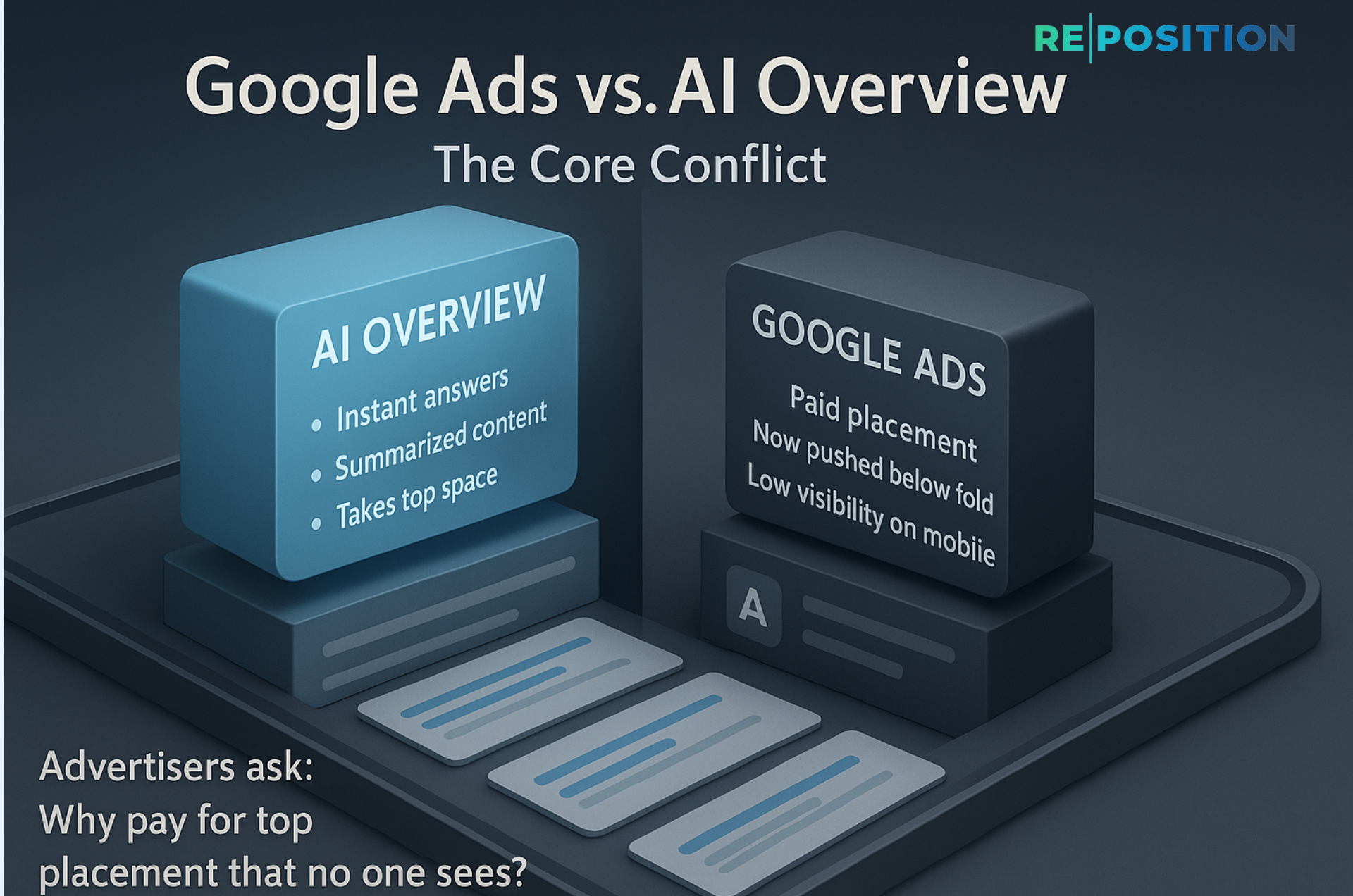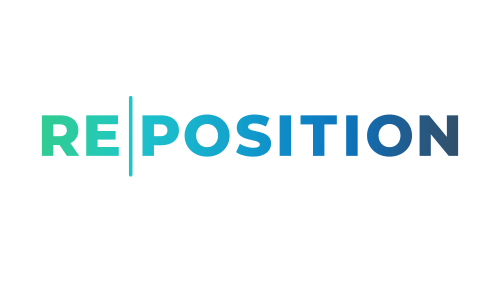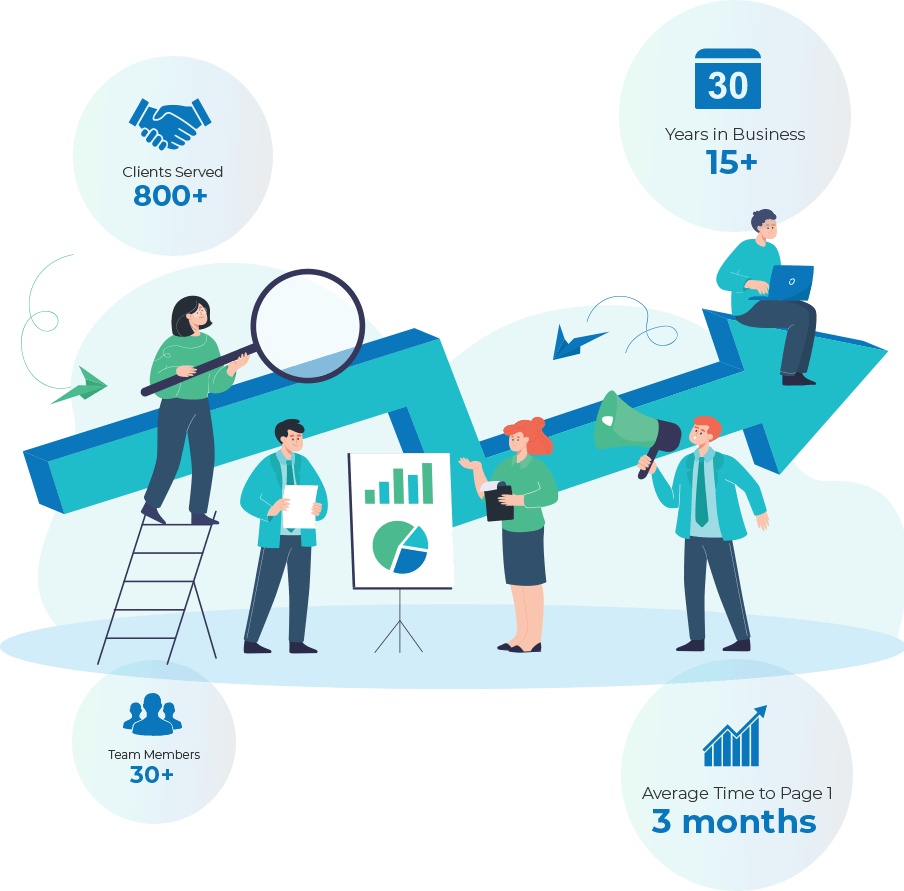The Shift in Search Experience
Search as we knew it has changed, again. This time, it’s not just another update to Google’s algorithm or a redesign of its ad dashboard. It’s something far more fundamental: the rise of AI-powered search results. Specifically, the introduction of Google’s AI Overview has sparked a silent battle that could define the next era of digital marketing. The question at the center of it all? Google Ads vs. AI Overview, which one will dominate the future of visibility and clicks?
From 10 blue links and four ad spots, the SERP now includes dynamic AI-generated answers, interactive summaries, and knowledge snippets, all eating into the visual territory once reserved for advertisers. This article breaks down how the showdown is playing out and what it means for users and marketers alike.
Understanding Google Ads Today
Before we look at what’s changing, let’s establish the baseline. Google Ads operate on a real-time bidding system where businesses pay to appear at the top or bottom of the search results page. Factors like ad relevance, keyword bid, and user behavior influence whether an ad shows and where.
Historically, these paid spots were prime real estate, especially for high-intent queries like “buy iPhone 15 Pro” or “best car insurance 2025.” Marketers loved the predictability and placement, but that predictability is now in flux.
What Is the AI Overview Feature?
Launched as part of Google’s Search Generative Experience (SGE), the AI Overview uses machine learning to summarize the most relevant, trustworthy information from across the web. These AI-generated responses often appear above both ads and organic results, especially for complex or exploratory queries.
This is not just a feature, it’s a fundamental shift in how Google delivers information. And yes, it’s causing ripples (and waves) across the ad industry.
Google Ads vs. AI Overview: The Core Conflict

The issue isn’t that either Google Ads or AI Overview is inherently bad, it’s that they’re now competing for the same space. When AI Overview dominates the top of the search page, especially on mobile, it pushes both organic results and paid ads downward or out of view entirely.
Advertisers are rightly asking: Why am I paying for top placement if it’s not even seen first?
Where Each Appears on the Page
In traditional SERPs, Google Ads consistently appeared at the very top, marked as sponsored links, followed closely by organic search results. This predictable layout gave advertisers premium visibility, especially for high-intent, commercial queries.
But in today’s AI-enhanced search results, that hierarchy has shifted.
This reordering is subtle but powerful. It changes:
- User attention flow: Many users now interact with AI summaries before seeing any other options.
- Scroll behavior: Fewer users are scrolling down far enough to engage with traditional ads or SEO links.
- CTR dynamics: Click-through rates for ads positioned below AI Overview may decline sharply, particularly for non-commercial queries.
So, while Google hasn’t removed ads, the visual priority has changed, and in the world of digital marketing, position equals power.
User Behavior in 2025 SERPs
Recent user behavior studies suggest that many searchers are:
- Reading AI Overviews first
- Clicking less frequently on ads
- Trusting AI summaries for quick answers
This leads to a decline in ad CTR (Click-Through Rate), especially for top-of-funnel queries. Users often find what they need from the AI summary alone, resulting in fewer clicks and, consequently, lower ROI for advertisers.
Are Ads Being Sidelined by AI?
Yes, in some cases, undeniably so. Certain queries, especially those with informational or research-oriented intent, now show zero paid ads above the AI Overview. Others may still display ads, but beneath the fold.
This isn’t universal, but it’s frequent enough to make advertisers rethink their dependence on top-of-page visibility.
Search Intent and Its Impact
When a user wants to “buy” something, paid ads are more likely to show up prominently. But when the intent is to “learn” or “compare,” AI Overview tends to take center stage. Understanding search intent is now more crucial than ever when crafting a campaign strategy.
Mobile vs. Desktop Display Differences
On mobile, the limited screen space makes AI Overview far more dominant. Ads, even if technically “above the fold,” may not be immediately visible without scrolling. Desktop layouts offer more breathing room, but user attention still often goes straight to the AI summary box.
The Role of Paid Results in the AI Era
Despite these shifts, Google Ads are not dead. They still play a pivotal role in:
- Driving transactional traffic
- Promoting time-sensitive offers
- Retargeting visitors
But the battlefield has changed, and ads must now compete harder for attention.
Advantages of Google Ads in This Battle
While AI Overviews are informative, Google Ads offer precision:
- Direct calls to action
- Custom landing pages
- Audience targeting
- Ad extensions and sitelinks
These are things AI summaries can’t do, yet.
AI Overview’s Edge: Instant Gratification
On the other side, AI Overview wins by being:
- Fast
- Concise
- Context-rich
For users looking for quick answers or broad summaries, AI provides immediate value. And often, that’s all the user needs.
Search Engine Real Estate: Who Owns the Top?
The top of the SERP has become a battleground, with AI Overview taking more space and ads struggling to remain visible. Whether this change depends on user satisfaction metrics and Google’s future monetization strategy.
Click-Through Rates: A Changing Story
Recent studies show:
- Ads below AI Overviews get up to 30% fewer clicks
- AI-driven pages see more zero-click behavior
This indicates a clear need for marketers to rethink their content and ad placement strategy.
Google’s Perspective on Both Elements
Google insists that AI Overview and Ads are not in competition. According to official statements, they’re complementary features that serve different needs. Yet, advertisers see what’s happening on the ground, and it doesn’t always feel so harmonious.
Is Monetization at Risk?
If AI Overview leads to fewer clicks, that could mean less ad revenue for Google, unless they integrate ads inside AI summaries, something they’re currently testing. If executed well, it could be a win-win. If not, advertiser trust may erode.
Marketer Reactions to AI’s Rise
Some advertisers are pulling back spend on high-CPC keywords. Others are diversifying their channels, turning to TikTok, Meta, or even Amazon ads to recapture lost attention.
Adaptation Tactics for Advertisers
Smart marketers are:
- Using long-tail keywords
- Building AI-optimized content for organic visibility
- Doubling down on branded campaigns
- Leveraging YouTube and Discover campaigns
Search Strategy Diversification
Don’t put all your traffic eggs in one Google basket. Explore:
- Email marketing
- Affiliate programs
- Native ads
- Owned media
This spreads risk and creates multiple entry points to your funnel.
The SEO Connection in Google Ads vs. AI Overview
SEO now plays a dual role:
- Fueling the AI Overview (via structured content and schema)
- Competing with AI for organic traffic
A well-optimized site may not get clicks, but it might feed the AI that gets shown first, a bittersweet irony.
Can Google Ads and AI Coexist?
They can, but not without strategy shifts. Google may eventually blend sponsored content into AI Overviews, but advertisers need to brace for a hybrid environment where both coexist but neither dominates fully.
A Tipping Point for Search
We’re at a pivotal crossroads. In the contest of Google Ads vs. AI Overview, it’s not just about visibility, it’s about control, predictability, and value. For advertisers, the road ahead will require agility, experimentation, and resilience. For users, the search experience may become faster, but not necessarily more transparent.
FAQs
Is Google replacing ads with AI summaries?
Not officially. But in some search layouts, AI Overviews are taking ad visibility away, especially on mobile.
Can businesses pay to be in AI Overview?
As of now, no. AI Overviews are generated from organic content and not influenced by paid campaigns.
How do I adjust my Google Ads strategy?
Focus on branded terms, invest in Performance Max, and optimize for intent-driven keywords.
Is SEO still relevant with AI Overviews?
Absolutely. Your SEO content might not get clicks, but it can power AI responses, increasing brand authority.
Do users trust AI Overviews?
Initial studies show high trust levels, especially for non-commercial, informational queries.
Will Google monetize AI Overview?
It’s highly likely. Google is testing ways to integrate ads within AI summaries to preserve ad revenue.

 SEO Services
SEO Services  Request a Quote
Request a Quote
 London
London
